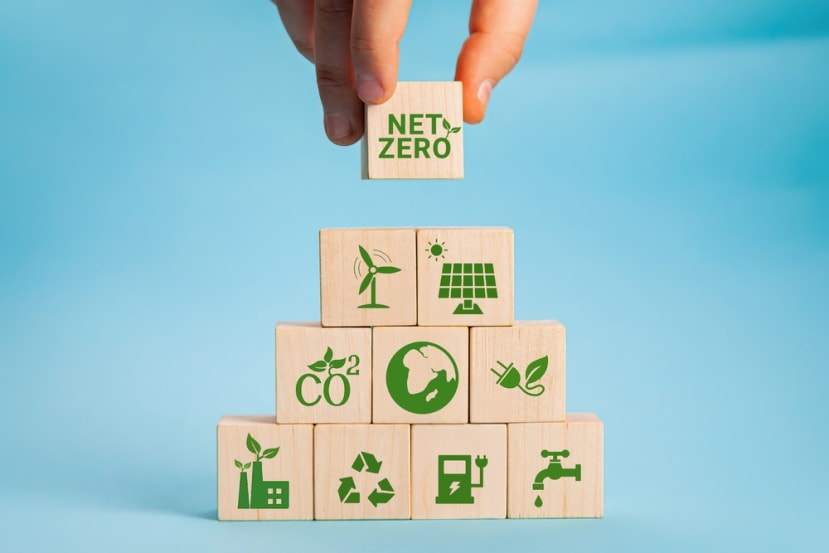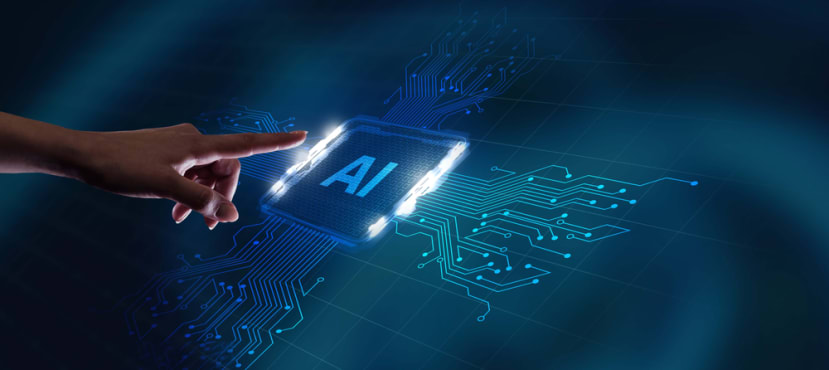How Does the Engineering Sector Embrace Net Zero?
Follow articleHow do you feel about this article? Help us to provide better content for you.
Thank you! Your feedback has been received.
There was a problem submitting your feedback, please try again later.
What do you think of this article?
People are engineers by nature. Archaeological evidence shows how the earliest humans would manipulate their surroundings to improve their lives, by arranging shelter, warmth, reliable food supplies, and protection from predators. Also, cave paintings and primitive jewellery suggest a willingness to use natural resources to fulfil higher needs such as communication and self-expression.
In today’s world, human nature has probably changed only a little. Our demands, and the tools at our disposal to make them happen, have changed enormously. So much so that we can now see the potential for our industriousness to cause irreparable damage if it is not controlled. One of the many effects of our work is the warming of our planet, which we must now limit if we are to avoid dangerous consequences.
The United Nations’ 2015 Paris Agreement expresses global consensus to limit the future temperature increase to 1.5-2.0°C by 2050 compared to pre-industrial levels, aiming to achieve a climate-neutral world by mid-century.
The global temperature rise is linked to the increase in greenhouse gas (GHG), mostly carbon dioxide, in the atmosphere. To reach the UN target, we all need to work at minimising any further increase in GHG in the atmosphere and, ideally, stabilise or reduce GHG. This is the reasoning behind “Net Zero”. But what does it really mean and how can we achieve it? More specifically, how can practising engineers contribute?
One reality that’s as certain as climate change is our desire to harness the energy and resources available to us in the pursuit of safer, healthier, longer, and more fulfilling lives; it’s an innate compulsion that drives us all.
What is Net Zero?
Let’s first understand the goal we are striving to achieve. According to the Oxford Net Zero Group, “To ‘go net zero’ is to reduce greenhouse gas emissions and/or to ensure that any ongoing emissions are balanced by removals.” And “The ‘net’ in net zero is important because it will be very difficult to reduce all emissions to zero on the timescale needed. As well as deep and widespread cuts in emissions, we will likely need to scale up removals.”
As engineers, we can influence the reduction of emissions in various ways such as product design and vendor selection. Capturing or removing carbon is rather more difficult to influence.
Net Zero by Design
As far as product design is concerned, engineers can contribute by creating new products that help end-users go net zero. Equipment for smart buildings provides an example. Adoption is known to be low, particularly in the residential sector. Several reasons have been identified, including cost, the inflexibility of legacy systems, and low understanding of the new technologies among installers. Technology suppliers could help overcome problems like this, perhaps by enhancing training for installers: maybe something as simple as running workshops or nurturing an online technical help community. The smart-building products scene is just one example. In almost any market, helping users understand and apply climate-saving product innovations can be as important as creating the product itself.
On the other hand, consumers could be encouraged to make large financial commitments – such as upgrading to smart lighting and heating - if they knew they could spread their investment over a longer period without worrying that their chosen product range may become obsolete before they have finished. Some semiconductor manufacturers guarantee the longevity of certain products up to a specific date in the future. If product makers could provide similar assurances in consumer markets, it would contrast with typical approaches that enshrine rapid obsolescence. On the other hand, it could help build stronger and longer-lasting relationships with partners and consumers.
Very far-sighted or lateral-thinking engineers may be able to come up with completely new inventions that change the way people behave or popularise energy-conscious or environmentally friendly activities. New technologies are becoming available all the time, which make the previously impossible possible. Compact and affordable high-performance batteries that enable new e-mobility solutions are one example. Also, there are small and easy-to-use wireless IoT-sensor modules that can be used out-of-the-box to build monitoring devices to raise an alarm if lights or heating have been left turned on in an unattended location, like an outbuilding. We don’t have to leave this to smart-meter makers.
Also, existing equipment designs can be improved to reduce the energy they consume when operating. The latest-generation ICs almost always consume less power than their predecessors, thanks to more modern process technology and energy-saving design improvements like extra reduced-power modes that users can exploit through software. Power-conversion circuitry can be improved by using more efficient topologies, digital-power principles, and wide-bandgap semiconductors.
In addition, you can consider the carbon emissions associated with every component and sub-assembly in the bill of materials: could you change the design of parts such as the enclosure to use recycled materials, or an equivalent material produced by low-carbon processes? The impact of packaging and shipping should also be considered, and the net-zero commitments of your chosen vendors. To audit suppliers accurately requires careful research and their support. Ultimately, you will acquire an impression of the overall carbon emissions associated with your product, or its embodied carbon.
Embodied carbon is already widely discussed in the building industry, as a way of assessing the sustainability of building design and materials. There are calls for universal embodied-carbon labelling, to cover any kind of product. There are already established carbon labelling schemes, however, and information published by companies like Apple can provide not only inspiration but also a glimpse of the expectations all high-tech companies could be expected to live up to in the future.
More Smart. Or Less?
With the infusion of AI into embedded systems and even small components like inertial sensors, it is becoming possible to build devices that provide complex functionality at a fraction of the cost and power consumption of earlier systems based on conventional processing. Machine-learning systems can assist decarbonisation by helping to avoid wasting energy: smart lighting and heating that can adapt autonomously to match occupants’ usage patterns, sensors and inspection systems that can help reduce manufacturing waste.
More generally, the infusion of AI into low-power edge and embedded computer systems for tasks like optical inspection, biometric recognition, and object classification saves the carbon emissions associated with running large AI algorithms in the cloud.
On the other hand, should we consider making some “things” less smart? it’s typical for designers to cram consumer products with technology to maximise sales appeal - electrically-powered functions, lights, a high-resolution colour display with animated graphics, smartphone connectivity. More planet-conscious buyers might see virtues in products that provide reduced (but more focused) functionality, and so can operate with a smaller battery or maybe run from harvested energy alone, and – with less, not more, circuitry inside - generate minimal electrical waste.
As concern for the environment continues to grow, and attention falls on everything we do and everything we own and use, all engineers can expect customers to ask more and deeper questions about the carbon impact of the products they buy. And they will expect credible answers.
As engineers, we need to keep up to speed with market expectations and be aware of the latest labelling schemes and methodologies for assessing the carbon footprint of the products and services we offer. It’s as important as keeping abreast of the applicable technical standards.
There is no shortage of opinions on the environmental impacts of the products we put on the market, although not all are sympathetic towards industry and commerce. We might look to reputable bodies such as the World Economic Forum for reliable commentary on sustainable manufacturing.
Carbon Removal
As far as removing GHG is concerned, carbon capture can achieve 14% of the CO2 reduction needed by 2050 according to the US Center for Climate and Energy Solutions. However, many carbon capture and storage (CCS) projects are associated with large-scale gas processing and production, and oil recovery. Some engineers, obviously, may be directly involved in developing CCS technology, or in commissioning or installing equipment at factories. Otherwise, it may be possible to use products that are made from captured carbon in our own designs. While a high proportion of captured carbon is destined to be permanently stored in deep geological features, some are re-used in products such as building materials.
Other approaches to carbon removal include conservation and reforestation. You might engage with reputable schemes, either locally, nationally, or internationally. While financial support is obvious and always needed, you could also consider providing equipment or services such as communication, navigation/surveying, site lighting, or safety equipment, or volunteering to help with activities.
Conclusion
Achieving net-zero carbon emissions is vital if we are to limit global temperature rise as required by the Paris agreement on climate change. Everyone can play a part, including engineers. When creating a product, numerous aspects can affect its impact on CO2 emission, including hardware and software design, component and vendor selection, and manufacturing processes. Consumers’ expectations are sure to intensify, and product designers need to become experts in issues such as carbon evaluation.
Reducing emissions is one side of the net-zero equation. Removing carbon from the atmosphere is the other and allows various approaches including supporting initiatives to preserve and restore natural ecosystems.



